Selecting a Table Tennis Racket is not a simple task.
There are enormous Table Tennis Rackets of different brands available in the market.
The same is true for Blades and Rubbers.
In my early days when I needed to change my Racket, I did extensive research nearly for one week before selecting the final one.
In the later stage, it was a more daunting task for a Rubber or Blade selection.
I have summarized all the ideas I have learned to make your selection easy.
How to Select Your Table Tennis Bat?
The big question is whether you go for a Ready-made bat or make it customized.
If you have just started playing Table Tennis, go for a Ready-made Racket.
Ready Made Racket
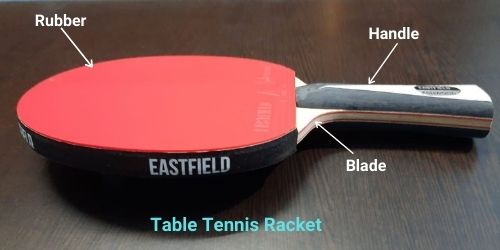
Criteria for Selection of a Ready-Made Racket
- No. of layers of wood in the Blade
- Thickness of Rubber
- Three attributes- Speed, Spin, and Control. These three attributes invariably depend on the first two criteria.
Choose the Racket mainly concentrating on the three attributes according to your style and level of play. Price is also a factor of consideration but doesn’t buy the cheapest one.
Advantages of a Ready-Made Racket
- You will not face the hectic schedule of choosing a Blade and Rubber separately and then pasting the Rubber on the surface of the Blade. Just buy the Racket and start playing.
- If you buy Blade and Rubber separately, it costs more compared to a Ready-made Racket with the same composition. For a Ready-made Racket, you will have savings of money, which is nearly 30% of the total price.
As you grow in Table Tennis, you will switch over to a custom Table Tennis Racket.
Custom Table Tennis Racket
When you drive into the search query, you see a lot of options for various price segments. You will jump from one to another and wonder what to buy!
Now, I dig into the insight of a Table Tennis Racket. This may help you choose the right one for you.
A Table Table Tennis Racket mainly consists of two parts.
- Table Tennis Blade
- Table Tennis Rubber
Two Rubber are glued on the surface of the Blade to make it a Table Tennis racket.
First, you have to choose the type of Blade that suits your style of play.
How to Select a Table Tennis Blade?
Let’s look at the official rules.
“The Racket may be of any size, shape, or weight, but the Blade shall be flat and rigid.”
Also, at least 85% of the Blade thickness shall be of natural wood. It may include an adhesive layer like carbon fiber, glass fiber, or compressed paper, but it shall not be thicker than 7.5% of the total thickness of 0.35 mm, whichever is smaller.
The addition of composite materials makes the blade stiffer and harder. You get more speed over an enlarged sweet spot but you have to deal with sacrifice of control.
At the time of choosing your Blade, look at the following aspects.
Things to notice while selecting a Blade
1. No. of layers of wood
Various options of Blade layers are available in the market. It may comprise 3 layers, 5 layers, or 7 layers. There may be an extra layer of carbon fiber or other adhesive materials.
Blades with a higher level of layers are harder and faster.
A 7-layer Blade is faster than a 5-layer Blade.
2. Types of Wood
There is a wide variety of woods that manufacturers consider as material for blades.
Here I am mentioning the most popular woods used as a blade material.
Balsa
This is the most popular wood and you will find most of the blades as a core material.
It is soft, light, porous, and springy. This soft balsa wood allows the ball to sink in which invariably increases the dwell time.
Players like loopers and choppers who want to produce a lot of spins would love this wood. Because of its softness and springing action, it will help vary spin and deceive your opponent.
Limba
It’s a classic European topspin wood. It’s heavy and fast but not springy. This soft limba wood generates superb control for topspin players.
The hitting capacity of the blade increases with the increase of thickness of the limba ply.
Limba has excellent acoustic properties also. Topspin players like the vibration and acoustic click sound.
Hinoki
Hinoki is the classic Asian topspin wood. The durability and the preservability of the hinoki wood are at the highest levels in the world.
It is the golden blade in table tennis. Hinoki wood is very soft.
It is easy to give a soft nice touch with this wood but very fast at the time of hitting.
This costly blade is only available in a single location in Japan.
3. Sweet Spot
It is a widely debatable subject in Table Tennis. I have seen a lot of discussions on this subject in the table tennis forum and there are several opinions.
In my view, it is the area of the blade that can produce maximum power with consistency but at the same time, you have less feedback.
The more stiffness, the larger the sweet spot will be.
Composite blades are generally stiffer than wood, which means they have a larger sweet spot with less feedback.
Many players prefer wooden blades to carbon blades because they like the feedback for more control over their shots.
For this reason, beginner and intermediate players are advised to use only wooden blades to build techniques.
4. Style of Table Tennis Blade
Blades are of two styles
- Penhold style
- Shakehand style.
Choose your style of Blade according to your style of play. If you are using a Shakehand grip, you must choose the Shakehand style of Blade.
It will not be worthwhile if we forget about the handle of the table tennis blade.
When you look at the specifications of the Blade, you will identify three types of handles.
AL- Anatomic
Fl – Flared
ST – Straight
Anatomic and Flared types of handles are of the same type with slight variation. These handles are more popular. Advanced players who change grip during play prefer a straight handle.
5. Class of Table Tennis Blade
It is the most important consideration. Class is broadly divided into three categories.
- ALL (All-round) – This Blade balances between speed and control. It is more suitable for beginner and intermediate-level players.
- OFF (Offensive)- Here you will get more speed with the sacrifice of control. If your style of play is attacking, opt for this Blade. Most professional players use this blade to destroy their opponents.
- DEF (Defensive)- If you focus more on control rather than speed, this Blade is for you.
These categories are also more fine-tuned, like
ALL+, ALL, ALL-
OFF+, OFF, OFF-
DEF+, DEF, DEF-
(+ → More speed and less control
– → Less speed and more control)
After the selection of the Blade, your next turn is to choose two Rubbers for the Forehand and Backhand sides. Note that the color of one Rubber will be red and the other one black.
How to Select a Table Tennis Rubber?
Types of Rubber
Rubbers are of two types, Pimples-in and Pimples-out
Pimples-in
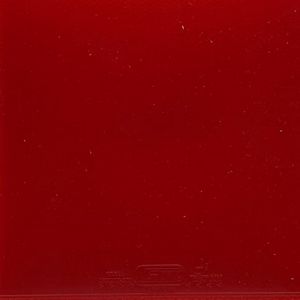
Here the pimples are facing inwards, i.e. towards the sponge. So the hitting surface is smooth and you can impart greater variety to your stroke.
This rubber is more popular and widely used in all levels of play.
Pimples-out
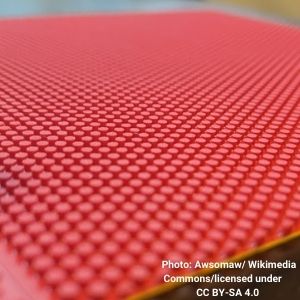
Here the pimples are facing outwards. So, you have to hit the ball with the pimpled surface. This is of two types.
- Short Pimples: Players use this rubber for fast blocking.
- Long Pimples: The primary use of this rubber is for a defensive style of play.
Criteria for selection of Table Tennis Rubbers
The thickness of the Rubber
The rubber consists of two parts, a sponge and a top sheet.
When we are talking about the thickness of the rubber, we only consider the thickness of the sponge.
If you jump into the search query of Table Tennis rubber, you will notice different Rubber thicknesses varying from 1.0 mm to 2.3 mm.
More thickness means softer Rubber which gives you more speed with the sacrifice of control.
In reverse, thinner Rubber gives you more control, but less speed.
So a 2.3 mm Rubber gives you the ultimate speed whereas a 1.0 mm Rubber is for ultimate control.
If you are a beginner or intermediate level of Rubber, go for a medium thickness of Rubber to keep parity between speed and control.
To identify the authorized Rubber, check the ITTF logo beneath Rubber.
Sponge Hardness
The hardness of the sponge is inversely proportional to dwell time.
So a softer sponge has more dwell time which produces more spin than a harder spin.
Speed Glue
Advanced players use speed glue to increase speed and spin into their shots.
If you are a beginner or intermediate, stay away from speed glue. You will be dealing with the risk of never developing your techniques.
However, since 2008, ITTF has banned the use of speed glue that contains toxic solvents.
Tackiness
Tackiness is the gripping capacity of the rubber. Tacky rubbers generate more spin but are vulnerable to the opponent’s spin.
Chinese players use tacky rubbers and hard sponges without speed glue just as opposed to European players.
Throw Angle
The rubber tends to throw the ball higher or lower over the net.
For the same stroke, a rubber that puts the ball at the end of the table has a high throw angle. Rubbers that have a low throw angle place the ball close to the net.
Low throw rubbers are effective against topspin whereas high throw rubbers can handle backspin in a better way.
Gear
It is the amount of variety of speeds that rubber can produce.
“Few gears” means the rubber is either fast or slow. “More gears” means more variety of speed that you can get out of the rubber depending on how hard you hit the ball.
“Few gears” of rubber is for the players who are either too aggressive or too defensive. As a thumb rule, the more the gear, the better the rubber.
Conclusion
When you are selecting your table tennis racket, choose the racket that suits you most. It should match your style and level of play. Don’t change your racket frequently. Rather concentrate on your game and develop better techniques. Learn new tactics and try to implement them in your game.
However, your racket may lose tackiness after heavy use, maybe after one year and you need to replace the racket.
Please care for your table tennis paddle. Keep it inside a Racket cover. Clean the surface of the Rubber with plain water whenever required. These practices will give your Racket a longer life.
As the day progresses, your game will develop and you will make your step closer to being a professional player. Then you need frequent changing of your Blade and rubber.
I can’t conclude without saying the last word that your coach is your ultimate Guru. Keep following him. Your practice and determination will surely make you a champion.
Related Topics


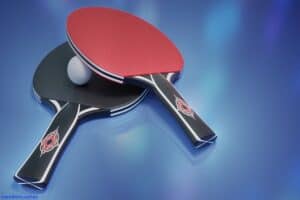
Thank u sir for making this…as a beginner, now i can understand which blade and rubber to choose from….😀😀😀😀
Thank u for going through my website. You all are my inspiration to continue my writing.
Hi, Thanks a lot for your blog. I am beginner and was very useful for me. Usually i hear seniors talking Offensive, offensive + etc. But i did not have a clue of that. Your blog is in very simple English and easy to read and understand. Many congrats and continue writing
Thanks sir for your encouraging feedback.
You also need to mention sweet spot and anti spin rubbers.
Thanks sir for advice. I will include these items shortly.